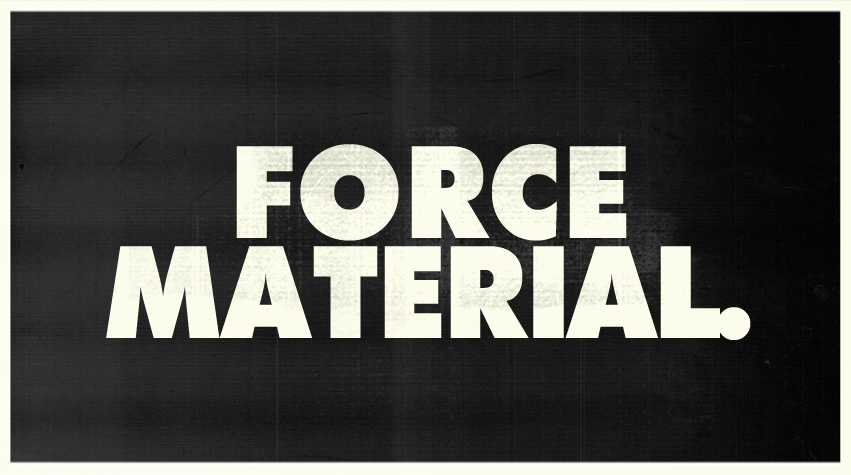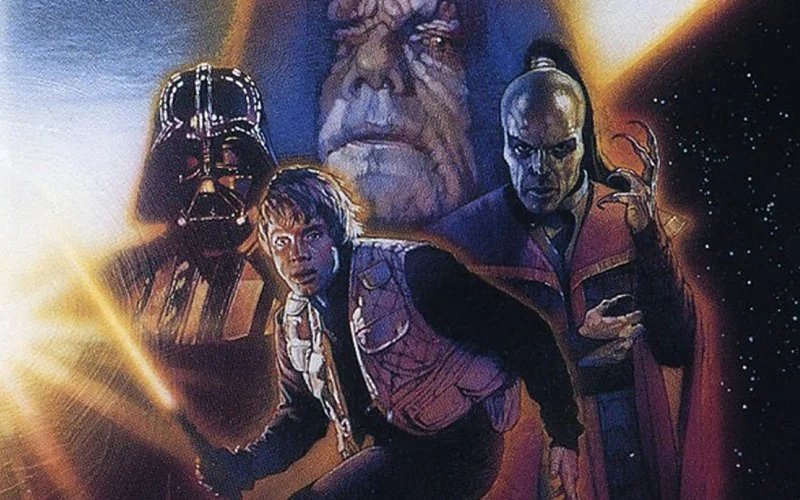A reshoot built on hope
How reshoots and retooling made The Force Awakens and Parks and Recreation better and more optimistic, and why we should hope for the same result for Rogue One.
Just about every Star Wars fan (and film industry observer) knows that Rogue One has been dogged by talks of reshoots since May, when the New York Post's Page Six broke the story that the film was "in crisis" and set to go into "expensive reshoots".
Entertainment Weekly swiftly tried to push the party line, reassuring fans that, yes, four or five weeks of reshoots were scheduled, but this was always part of the schedule.
Regardless, the genie was out of the bottle, and ever since that Page Six report, anticipation for the film has been somewhat tainted by the 'r' word.
Personally, I think the key to tackling reshoot fears isn't to downplay the fact that these reshoots have taken place, but to emphasise that they're making the movie better. I don't care if they reshoot the entire film, if the end result is a better film.
In fact, reshoots helped make The Force Awakens a better movie — and they seem to be helping Rogue One in the same way.
In JJ Abrams' commentary track for The Force Awakens, the director discusses how reshoots helped forge the relationship between Finn and Rey that fans found so charming.
At first, Abrams explains, the two characters had a much more combative attitude towards each other — but ultimately, he decided it was more fun for them to strike up a fast friendship.
"When we first started shooting, we hadn’t really figured out the proper dynamic between Finn and Rey," Abrams says.
"It was much more contentious, and so in this first scene where they come together, it just didn’t work, and that was what we shot originally in Abu Dhabi, and so we ended up reshooting their entire first conversation... because we needed to change their dynamic. Originally, they were much more angry at each other. And truthfully, it wasn’t working.
"Originally in this scene, Finn revealed that he was a stormtrooper. And in this scene she had never heard of Luke Skywalker. Which didn’t really make sense because later she’s heard of Han Solo and she’s been wearing the Rebellion helmet... so the idea was that her life was so isolated and so sad and so without hope that the most optimistic thing, Luke Skywalker himself, was nothing but a myth, and the idea is that Finn brings this hope to her.
"And changing their relationship and their attitudes and what they tell each other, I think helped enormously, in sort of bringing forward this sweetness and the kind of relatability that these characters needed.”
Rey and Finn's jubilant celebration aboard the Millennium Falcon after escaping Jakku was also the result of reshoots.
"We changed it after we felt that the original relationship wasn’t really working," Abrams explains. "They needed this kind of excitement. This kind of joy and bonding. And they simply weren’t having the kind of fun that felt appropriate... I rewrote this scene so that they would have a little bit more of that kind of buoyant energy where they would get to meet and have a sweet moment.”
The scene in Maz's castle that sees Finn briefly bid farewell to Rey was also improved by reshoots.
"This scene, too, was reshot while we were in post," Abrams says. "And we did it because this was the moment where we needed to learn Finn’s story, that he was taken as a baby, raised to be a soldier, but he knows it’s wrong. The key to this scene was to allow Finn to be embracing his decision to find a strength in his intention to not go back to the First Order, to not get involved in that group again.
"The earlier version of this scene had a Finn that was much weaker, much more in retreat, unsure, afraid. We wanted Finn to own his decision, to have the intention of someone choosing not to be part of this any more, not to get involved in the First Order, a group he knows all too well."
At first glance, some of these reshoots might seem counter-intuitive. If conflict is a source of tension, then surely the film would be more interesting if there was more conflict between Finn and Rey?
Not necessarily. Worlds away from the blockbuster production that was The Force Awakens, showrunner Michael Schur once faced a similar problem with his struggling comedy, Parks and Recreation — and he, too, improved his show by removing a source of conflict and making his leads friendlier.
"For storytelling purposes, there has to be conflict, but that doesn’t mean the people have to be mean," Schur told The AV Club.
"I’ve never liked mean-spirited comedy. The characters on our show make fun of each other, but not in a biting, angry way. And there’s no shortage of conflict in the world of government. The public forums, for example, are one conflict-generator. They hate the library, there’s another.
"My favorite sitcom of all time is Cheers. That’s a perfect example of how, like, people made fun of Cliff, but you never got the sense that they didn’t like Cliff."
After the first, rushed season of Parks and Recreation, the show's creators received a lot of feedback that lead character Leslie Knope (Amy Poehler) just wasn't working. People thought she came off too much like The Office's Michael Scott, a character to be pitied rather than respected.
(It didn't help, of course, that the show's creators were best known for working on The Office.)
Schur and his colleagues didn't have the luxury of reshooting the first season of Parks and Recreation, but they made sure that in the show's second season, she went from a cartoonishly pathetic boss to a passionate, devoted public servant who was actually supported and admired by her staff, rather than mocked and ridiculed.
Similarly, Andy (Chris Pratt) went from a bad boyfriend to a lovable goofball, and even the show's resident buzzkil, April (Aubrey Plaza), showed signs of a softer side.
"Two of the biggest things we changed were that, first, Leslie was reading to people — completely unintentionally — as ditzy," Schur told The AV Club. "That was never our intention. We always thought she was really smart and good at her job. We realized we had screwed it up a little.
"And another big thing was that we’d originally designed the character of Andy to be there for six episodes, then be gone. Ann was going to wise up and realize he was a loser and get rid of him. But Pratt auditioned, and we were like, 'This guy’s too funny to not use'. We slowly changed that character to one that’s more loveable and sweet — a moron and doofus, but not a bad person."
The staff of the show's fictional Parks department became warmer and friendlier, and Leslie Knope became the kind of inspirational leader that people will follow anywhere — and, in the process, the show became much less mean-spirited and infinitely more watchable.
What does any of this have to do with Rogue One? Well, I'm certainly not suggesting that Parks and Recreation is an influence on Rogue One, that's for sure. I'm saying that the positive changes made behind the scenes of The Force Awakens and Parks and Recreation should help allay the fears of anybody who's worried about Rogue One.
Based on what little we know of the reshoots, and the differences between the first (pre-reshoots) trailer and the later (post-reshoots) trailers, I'm guessing that changes have been made to Rogue One in order to improve the chemistry and camaraderie between the team, and to make Jyn Erso a more vocal leader.
Lucasfilm sources told Entertainment Weekly that the reshoots involved intimate moments and character development, not entire action sequences and plot lines. The goal, apparently, is to punch up the film's emotional beats, the same reason The Force Awakens underwent weeks of reshoots in the summer of 2015.
We won't know for sure until December, but it seems like a conscious effort is being made to make us care more about these characters, and I'm not sure how that can be a bad thing.
It's possible that the footage we've seen in the later trailers was always part of the film, but it's just as likely this footage has been chosen to showcase Rogue One's course correction. Jyn Erso has gone from being a character defined entirely by her rebellious nature in the first trailer, to one who inspires hope and fierce loyalty in her troops in later trailers.
Like Leslie Knope, she can make 10 men feel like a hundred, and she can motivate them to take the next chance, and the next, until they win, or the chances are spent.
Instead of worrying that the reshoots have softened the tone of the movie, I'm glad that Rogue One now looks to be emphasising one of the elements that makes Star Wars special — the relationships between our heroes.
That's one of the things I've always loved about the original trilogy — Luke, Han and Leia might bicker between themselves sometimes, but at the end of the day, they're all they have, and they'll do anything for each other. It's not the Force that brings down the Empire. It's their humanity.
My favourite example of this might actually be Matt Kindt and Marco Castiello's relatively obscure Dark Horse comic, Rebel Heist, in which an Imperial spy switches sides to the Rebel Alliance after seeing how Luke, Han and Leia support each other. The spy wants to be on whatever side they're on, because that's the side that represents our better nature.
We all talk about how tough 2016 has been, but to be honest, I think the world has been in a pretty dark place for a while. The divisions in society are deep and they're getting deeper. But I really believe most people want things to be better, that we want to do better.
That's why, no matter how many times you watch Han comes to Luke's rescue in the battle of Yavin, you can't help but smile every time. That's why Rey and Finn, two characters from very different sides of the tracks, striking up such a powerful friendship so quickly spoke to so many of us. That's why I'd vote Knope in any election.
That's why it's not enough for Rogue One to be a war movie. For us to invest in these characters, we have to believe that they want to go to war for each other, and that they're doing it for the right reasons — that their team is united not just by a mutual fear of what might happen if they fail, but by a genuine appreciation of each other and a real hope for the future.
Whether it was always there or whether it's the result of reshoots, Jyn Erso is a symbol of that hope now.
Are we with her?
All the way.
Force Material is a podcast exploring the secrets and source material of Star Wars with hosts Rohan Williams and Baz McAlister. Listen and subscribe on iTunes, Spotify, iHeartRadio, TuneIn, Stitcher, PlayerFM and Castro; stay in touch with us on Facebook, Twitter and Instagram; and support the show by browsing our range of shirts, hoodies, kids apparel, mugs and more at TeePublic.









